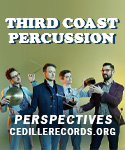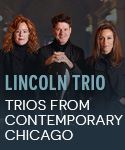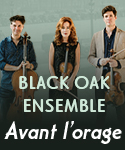L’Elisir d’amore is such a perfect miniature, so unassuming, so charming, that it suffers more than most operas from directorial bloating. What then is a stage director to do if the work is being performed in an arena that seats 5,000, on a stage 130 feet wide and almost 50 feet deep? In July, 2002 in just such a huge arena in Macerata, Italy, director Saverio Marconi and set designer Antonio Mastromattei devised a production both ingenious and true to the score. The stage features a big red box, which opens to present the entire opera, including sets, characters, and even the orchestra and conductor. The effect is magical and intimate; within this “gift box” are Donizetti’s simple folk and simple countryside, and everyone takes part. Dressed in bright blue outfits and seated on risers, the orchestral players and conductor even participate in the action (occasionally), and the whole band stands to play the final ensemble. It’s a sheer delight, with a fine cast of singing actors who don’t have to overdo anything because the sets are already helping them interpret the opera.
The Nemorino, Aquiles Machado, is an unselfconsciously pudgy, small, full-voiced lyric tenor who sings with heart, musicality, impeccable pitch, and even an interpolated high-C; his “Una furtiva lagrima” is the touching centerpiece it should be. Valeria Esposito–pretty, slim, and active–is a lovely Adina with just enough acid in the voice to go with her flirting and enough of a sympathetic demeanor to make us understand why Nemorino loves her. Enrico Marrucci’s fine, secure, lyric baritone is just right for the studly character of Belcore, and Erwin Schrott is a young, smooth-talking Dulcamara with a big bass voice that he only sporadically overuses. Roberta Canzian is a lovely Giannnetta, and probably a future Adina. Some other audio-only sets may feature finer singing (Sutherland/Pavarotti; Gheorghiu/Alagna) but this one is super in its own, smaller way.
The Orchestra Filarmonica Marchigiana and Coro Lirico Marchigiano “V. Bellini” play and sing with spirit under Niels Muus, and even the extras–dancers, acrobats, bumpkins–are in place. The picture is crystal clear and the camerawork is expert, making certain that we don’t have to look at tonsils and that we get the big picture as well as the individual star moments. The stereo sound is similarly fine. This performance also is available on audio-only CDs (TDK CDM-USOPELAM), and it succeeds there as well–but this performance should be seen. Given the usually-rotten or weird or too literal imagination that normally goes into opera productions, this stands as an absolute how-to.
































